These are unprecedented times for Australian cricket. Just seven weeks before the five-Test Ashes series against England begins in Perth, questions remain over the make-up of their top order.
How did it come to this? Simple: David Warner’s retirement.
A Vegemite character, yes, but Warner’s brilliance against the new ball was indisputable. He opened the batting in all but three of his 205 Test innings, making each of his 26 Test centuries and 37 fifties from there. His average of 45.09 was excellent, and his 70.42 strike rate (runs per 100 balls faced) near untouchable.
But since Warner’s final innings in January 2024, Usman Khawaja has gone through more business partners than Alan Sugar.
For four Tests (two against the West Indies in Australia, then two in New Zealand), Steve Smith did the job. During the Border-Gavaskar Trophy, Nathan McSweeney was handed his first Baggy Green and sent out to face Jasprit Bumrah and the rest of India’s attack. Three Tests later, Sam Konstas was in for two games.
In Sri Lanka, Travis Head was bumped up the order for two matches, while Marnus Labuschagne had a one-off go in June’s World Test Championship (WTC) final at Lord’s. Konstas then returned for the three-match West Indies tour in June and July.
Five combinations in 14 games hardly screams stability and, if they are not careful, Australia are headed in the direction of England’s struggles after Andrew Strauss retired in 2012 — eight of the 18 first-class English counties can currently count discarded Test openers among their ranks. Surrey have four.

David Warner departs Test cricket in January 2024 (Pete Dovgan/Speed Media/Icon Sportswire via Getty Images)
Australia’s selectors have made their own mess, displaying an uncharacteristic toothlessness as Warner’s numbers waned. Across 22 Tests in 2022 and 2023, he averaged just 29.3 (21.08 if his two big hundreds are deducted). Arguably, Warner should have been pushed before he jumped.
But then again, Australian cricket is not where it once was.
The talent pool is decent but how they must long for the 1990s and 2000s when Jamie Cox (51 first-class centuries, average 42.69), Michael Di Venuto (60 centuries, average 45.9), Jamie Siddons (35 centuries, average 44.91) were prolific but not picked for a Test. Even Michael Hussey had to wait until he was 30, with 60 first-class hundreds and an average a shade under 53 to his name, to have a go.
A settled Australian top three is a long way off but the assumption is that Cameron Green will come in at first drop. Given how tightly Beau Webster gripped the all-rounder spot when a stress fracture in Green’s back forced him to miss six months of cricket from October 2024 (he only began bowling again this month), it is the only way to squeeze his talent into the side.
The pair to face the new ball is less obvious. Multiple combinations could be used across the five Tests.
Unlike in England, domestic runs are still valid tender in Australia. The Sheffield Shield, Australia’s inter-state first-class competition, began on October 4, with three rounds taking place before the first Ashes squad is named. Many believe it is a straight run-for-run shootout.
Here, The Athletic analyses the runners and riders.
The incumbentsUsman Khawaja (Queensland)
Test career: 84 matches, 6,053 runs @ 43.86, 16 x 100, 27 x 50, Strike rate per 100 balls (SR): 48.56
Last Test: vs West Indies, Kingston, July 2025
2024-25 Sheffield Shield: Five matches | 375 runs @ 53.57, 1 x 100, 2 x 50, SR: 51.93
This will be Khawaja’s final Ashes, perhaps even his last hurrah. Barring injury, he will open in Perth.
A beauty of a player and a person, Khawaja’s numbers have been declining. In his past 16 Tests, he has scored 876 runs at 31.28. His 232 against Sri Lanka eight months ago made him the second-oldest Australian behind Sir Donald Bradman to score a Test double century, but more importantly, gave the 38-year-old’s stats a welcome boost. Exclude that innings and Khawaja is averaging 23.85 since the start of 2024.
And those runs came in Galle, vastly different conditions to those that await against England. Plus, in 10 subsequent Test knocks his top score is 47. A decade back, with greater competition, Khawaja would have been in real trouble. As it is, he started his summer by scoring 69 against Tasmania.
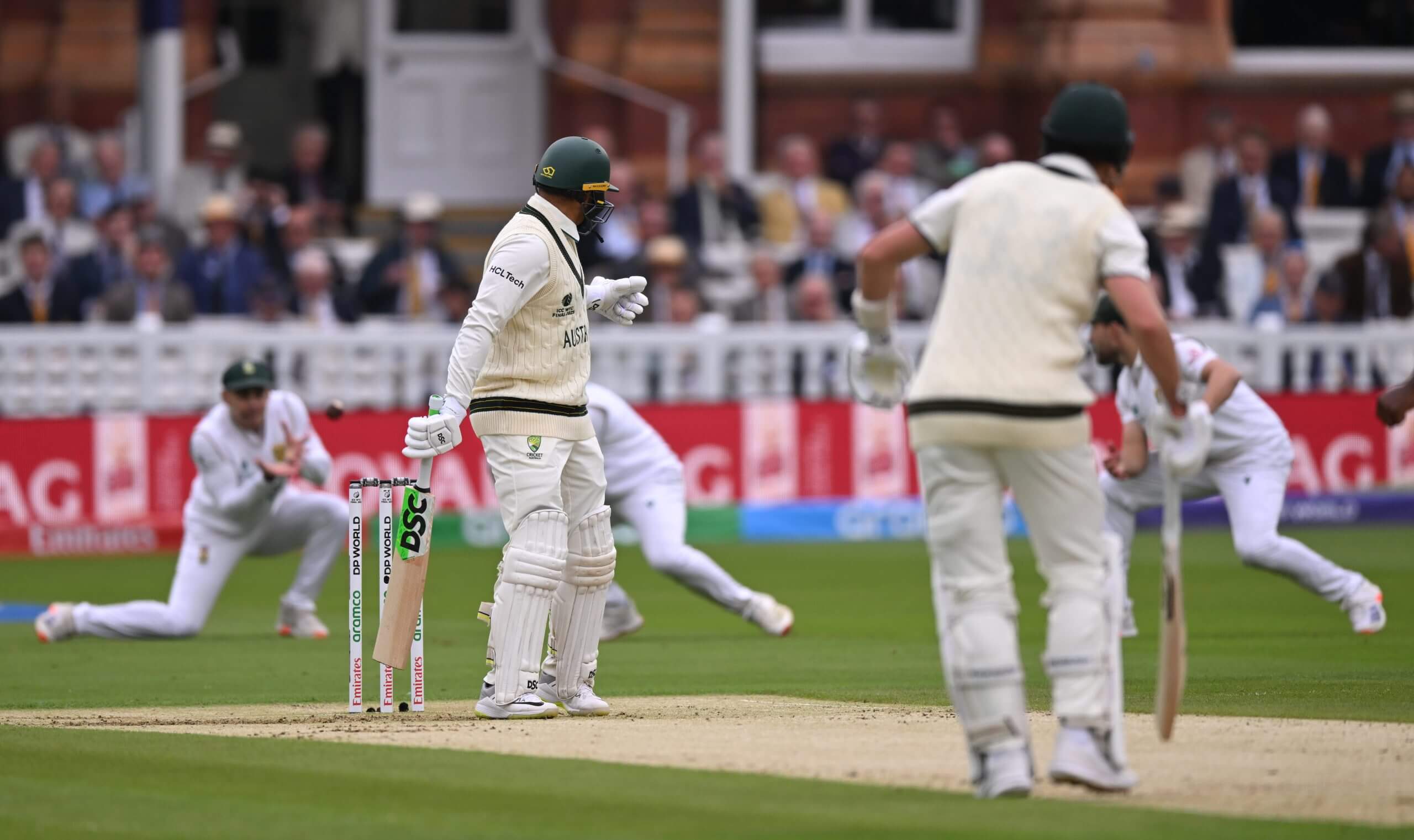
Usman Khawaja is caught by South Africa’s David Bedingham in the WTC final (Mike Hewitt/Getty Images)
Sam Konstas (Victoria)
Test career: Five matches, 163 runs @ 16.30, 1 x 50, SR: 56.40
Last Test: vs West Indies, Kingston, July 2025
2024-25 Sheffield Shield: Nine matches, 652 runs @ 40.75, 2 x 100, 3 x 50, SR: 54.10
On Boxing Day 2024, a new Australian cult hero was born.
Konstas’ debut against India was just his 12th first-class match. Yet, on arguably the country’s biggest sporting day, the then-19-year-old showed no glimmer of nerves. Instead, spectators at the Melbourne Cricket Ground will forever tell tales of his audacious 60 off just 65 balls. The 18 runs plundered off one over was the most Jasprit Bumrah had ever conceded in Tests, leaving the bowler perplexed as he was replaced.
Konstas opened the 2024-25 Sheffield Shield campaign with twin centuries against the eventual champions South Australia, becoming the youngest player to reach 100 twice in the same Shield match since Ricky Ponting in 1993.
Oddly, the selectors went for Travis Head for the Sri Lanka series that immediately followed, allowing him and Khawaja to gorge on what could be politely termed ‘average bowling’ on flat decks. Konstas missed the WTC, only returning for the recent trip to the West Indies, and, across nine knocks since his debut half-century, has a meagre 103 runs.
In the Caribbean, he reached 50… well, total runs. Yes, he made exactly 50 runs across six innings. That said, only Green emerged with any credit on tougher wickets.
During September’s ‘A’ tour of India, Konstas made 188 runs in four innings, including one century. The series was expressly marked as preparation for Australia’s full tour in 2027 (hooray, finally some selection foresight), but those runs might not go unnoticed in the more immediate future. More worryingly, scores of four and 14 in his first two domestic Shield games represented a sluggish start to the season.
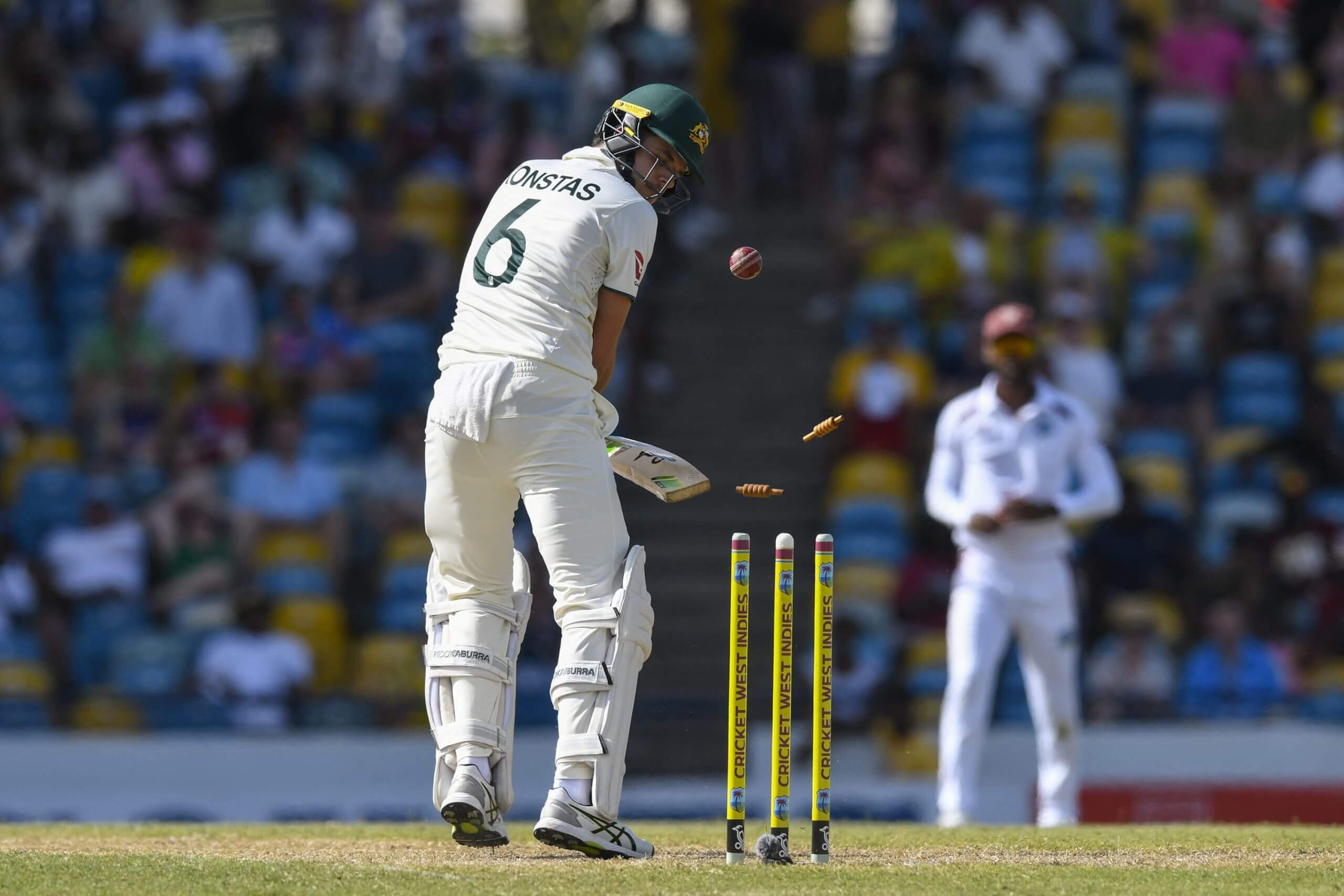
Sam Konstas is bowled by the West Indies’ Shamar Joseph in Bridgetown, Barbados (Randy Brooks/AFP via Getty Images)
Something newJake Weatherald (Tasmania)
2024-25 Sheffield Shield: 10 matches, 906 runs @ 50.33, 3 x 100, 3 x 50, SR: 68.27
For Weatherald, the Tasmanian grass has been greener and lusher. After eight campaigns with South Australia, the 30-year-old’s record was decent-to-firm (3,837 runs at 34.25) but the idea that the left-hander would, within a few years, open in a Test match was fanciful.
Playing just once in 2023-24, after his move to Hobart, hardly improved his hopes. But the yield following that fallow summer was as impressive as it was unexpected. Three centuries and more runs than any other batter in the 2024-25 Shield have made Weatherald the people’s favourite to partner Khawaja in Perth. Scores of 183 and 54 against Sri Lanka A in July hardly did any harm, either.
Should he play, Weatherald will be relatively unknown to many in England — except, that is, for his club-mates from Barnsley Woolley Miners (South Yorkshire) and Great Witchingham (Norfolk), for whom he has starred in recent UK summers.
Weatherald confesses to being a lazy cricketer in his youth, in part because of the cruisy nature of a Darwin upbringing. He believes that, as a result, the fundamentals didn’t come until later in life. However, he is now an obsessive (he spent his Covid-19 lockdown learning guitar riffs to a near-unhealthy degree) and has dreamed of a Baggy Green every day since turning professional.
Made a solid 67 against Queensland to start the red-ball summer.
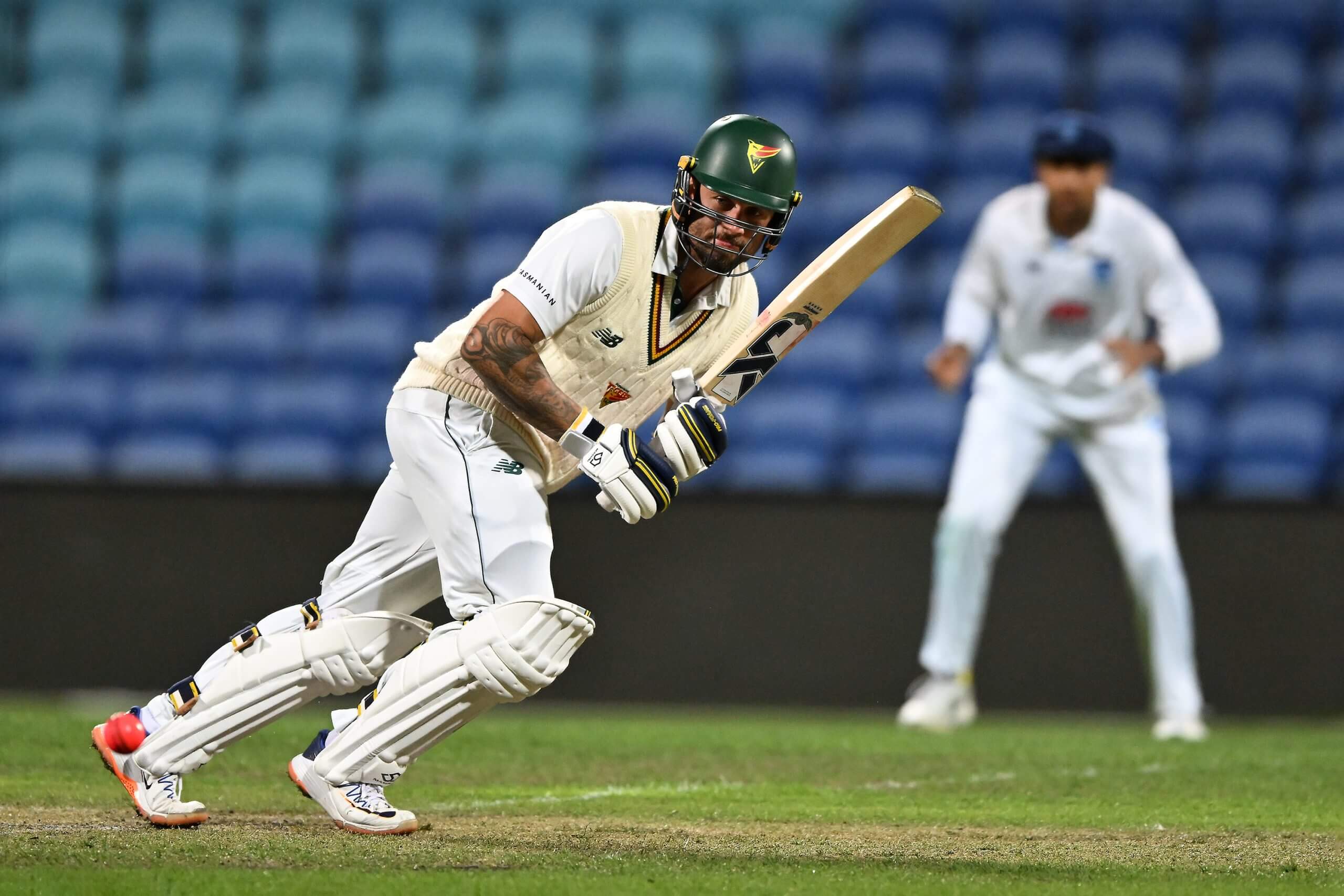
Jake Weatherald batting for Tasmania against New South Wales in Hobart last March (Steve Bell/Getty Images)
Campbell Kellaway (Victoria)
2024-25 Sheffield Shield: 10 matches, 738 runs @ 41.00, 2 x 100, 4 x 50, SR 43.53
Last November, Kellaway had never opened the batting in the Shield, so to do so in a Test 12 months later would be quite something.
His move up from No 3 for Victoria came from necessity, with a packed middle order requiring his election. Kellaway made his maiden first-class century at the second time of asking.
Kellaway being in the discussion shows where Australian cricket finds itself. The 22-year-old is tipped to be a fine player but averages less than 35 in Shield cricket and has just two centuries. When the late Phil Hughes was picked in 2009, he had three hundreds in 12 games and averaged 65 in the Shield.
Kellaway made a false start to the Shield summer with Victoria — ducks will not help his cause — and, while the potential is there, he needs time.
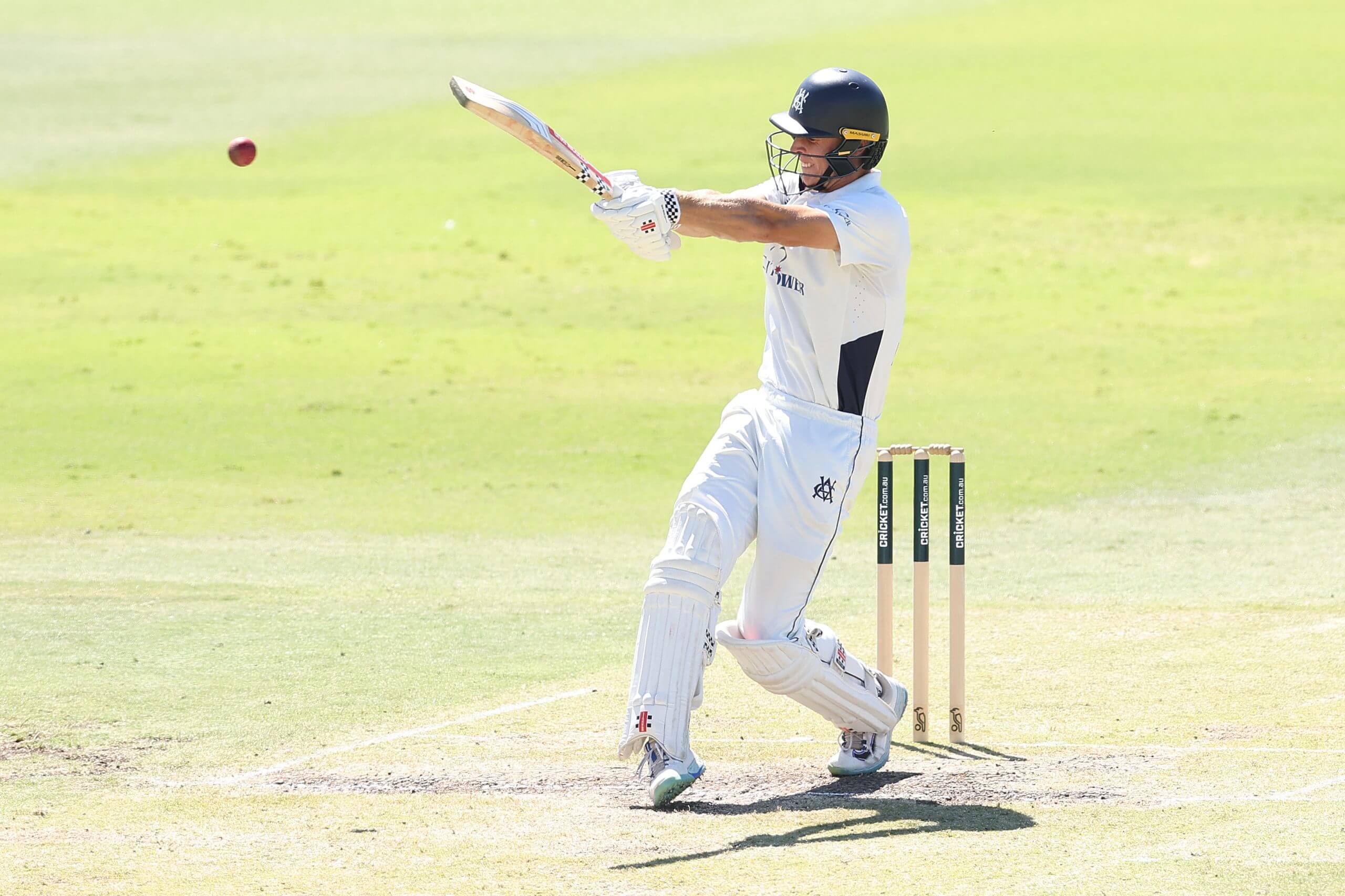
Campbell Kellaway playing for Victoria against Western Australia at the WACA in March (Paul Kane/Getty Images)
The safe pair of handsMarnus Labuschagne (Queensland)
Test career: 58 matches, 4,435 runs @ 46.19, 11 x 100, 23 x 50, SR: 51.67
Last Test: vs South Africa, Lords, June 2025
2024-25 Sheffield Shield: Four matches, 228 runs @ 38.00, 2 x 50, SR: 58.61
As recently as the New Year’s Test at Sydney Cricket Ground (SCG) in January 2023, the idea of a Labuschagne-less Australia would have been met with hysterical laughter. After 33 Tests, he averaged 59.43. His idiosyncrasies and love of gum just made him more endearing.
But 25 caps later and Labuschagne finds himself trying to find a route back into the side, that average having dropped to 46.20. After 10 centuries in 56 Test innings, he has made just one — 111 against England at Old Trafford in July 2023 — in the next 48.
While early Labuschagne drove beautifully through the covers and whipped the ball firmly through midwicket, the more recent iteration seemed to have retreated, his mindset becoming defensive.
Before his omission, Labuschagne opened in the WTC final defeat to South Africa (39 runs in two knocks) — only the second time he had opened in first-class cricket since 2016. But, given that 89 of his 104 Test innings have come at No 3, he could have the mentality to succeed.
A fine 160 from 206 balls in Queensland’s Shield opener, on top of a List A hundred in mid-September, suggests Marnus may just be back.
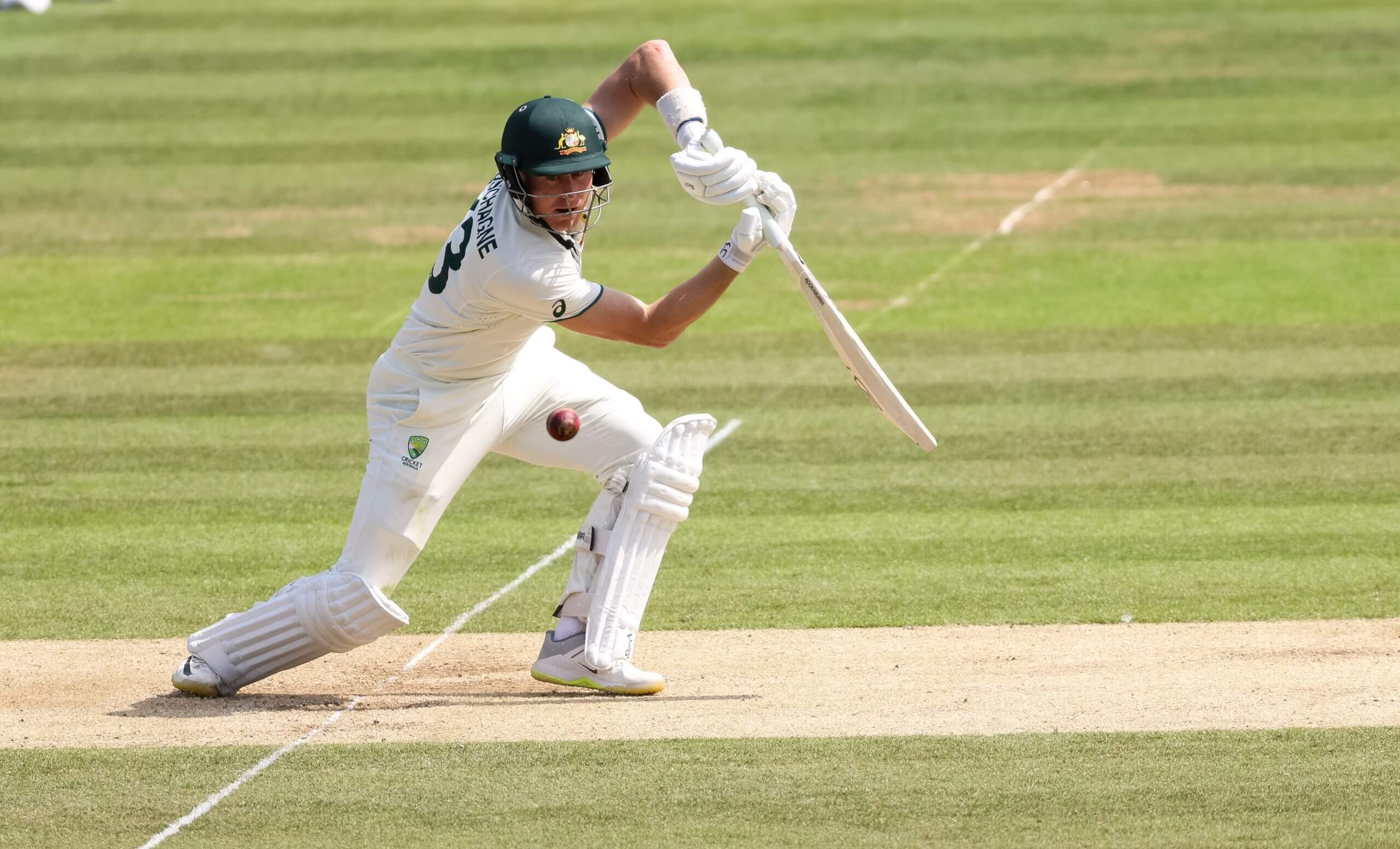
Marnus Labuschagne has laboured in Test cricket lately (Paul Harding/Gallo Images/Getty Images)
Back to the futureMatthew Renshaw (Queensland)
Test career: 14 matches, 645 runs @ 29.31, 1 x 100, 3 x 50, SR: 42.23
Last Test: vs India, Delhi, February 2023
2024-25 Sheffield Shield: 10 matches, 496 runs @ 29.17, 2 x 100, 1 x 50, SR:49.55
Day one of the Ashes will be three days short of nine years since Renshaw’s Test debut as a baby-faced 20-year-old. He made 71 in his second Test and, two matches later, scored 184 in the New Year’s Test at the SCG against Pakistan in early 2017. He passed 50 in his next two Tests but tailed away after that and was dropped in March 2018.
Renshaw endured domestic cricket’s wilderness for nearly five years before a recall in early 2023. Nine runs in four middle-order innings made it short-lived. In early 2024, chief selector George Bailey effectively said Renshaw was viewed as the seventh-best batter in the country, having been in the 2023 Ashes squad for the opening two games.
At Lord’s, Renshaw’s dad watched on and had the sense to remove his Australia jumper to reveal an England shirt after Alex Carey controversially ran out Jonny Bairstow.
A Yorkshireman by birth, Renshaw is a Newcastle United fan whose cousin is former Manchester United under-23s goalkeeper, Paul Woolston. An engaging, fun-loving character, across several stints playing county cricket with Somerset, Renshaw enjoyed life as a commentator and public address announcer.
A first-class average of 37.28 is decent but he will need to start this year’s Shield averaging north of 50 to have any chance of an Ashes spot. And 128 against Tasmania to kick the summer off is an excellent start.
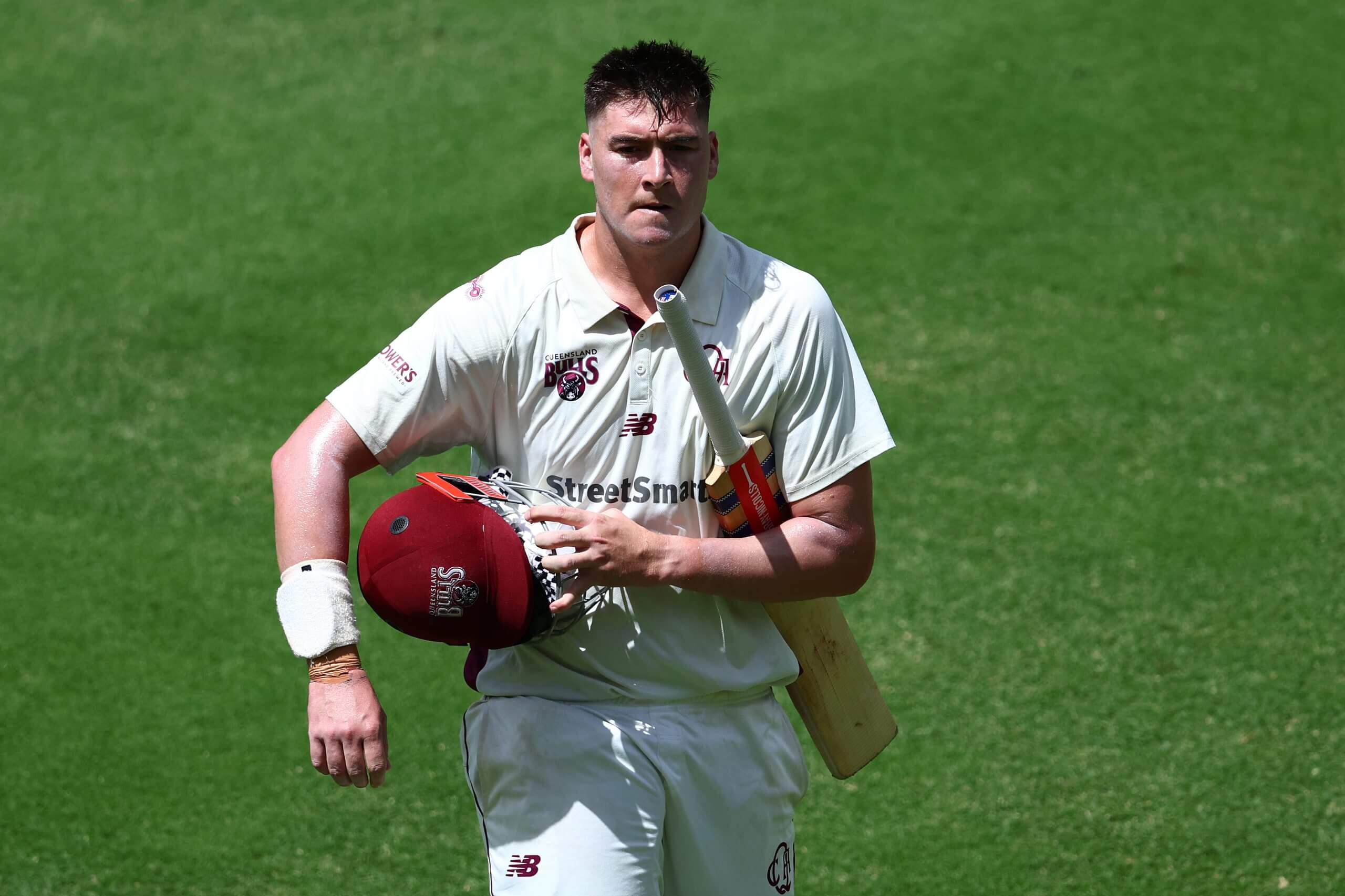
Matthew Renshaw is an outside bet for a Test recall (Chris Hyde/Getty Images)
Marcus Harris (Victoria)
Test career: 14 matches, 607 runs @ 25.29, 3 x 50, SR: 45.91
Last Test: vs England, SCG, January 2022
2024-25 Sheffield Shield: Nine matches, 561 runs @ 33.00, 1 x 100, 3 x 50, SR: 50.81
Short, punchy and left-handed — like the majority on this list — Harris has had several digs at Test cricket, with the latest almost four years back. His record is middling, with just three half-centuries in 26 knocks.
However, at State level, Harris is a demi-God. He made 157 as an 18-year-old for Western Australia, breaking Clem Hill’s 115-year-old record to become the youngest Australian to pass 150, and has not looked back.
Since moving to Victoria, Harris averages 44.60 with 15 centuries. In all, he has made 32 first-class hundreds. Three of those came this summer for Lancashire, whom he ended up captaining despite having to return home for a period after becoming a father.
Across stints with Gloucestershire, Leicestershire and Lancashire, he had a dozen three-figure scores. Harris’s footwork is sometimes debated but it is difficult to argue with the volume of runs.
At 33, some will say Harris is a past never-quite-was rather than the future. However, it is worth remembering that Khawaja himself was 35 by the time he returned to Test cricket in January 2022, having been out of favour for 864 days. Often, the best players come in, are dropped and then come back again.
Like Renshaw, Harris was a backup on the last Ashes tour, albeit he was retained for all five Tests. A long shot to start but if Khawaja struggles in the early Tests, Harris has a decent chance of being the experienced man brought in. His first knock of the Shield summer brought him 61 batting at No 3 for Victoria.

Marcus Harris featured in the 2019 and 2021-22 Ashes series (Mark Kolbe/Getty Images)
The outsidersTravis Head (South Australia)
Test career: 60 matches, 3,963 runs @ 41.71, 9 x 100, 20 x 50, SR: 67.67
Last Test: vs West Indies, Kingston, July 2025
2024-25 Sheffield Shield: One match, 40 runs @ 20.00, SR: 64.51
An honourable mention for Head, as his average in eight innings opening (45.86 average, SR 80.86) outshines his overall career numbers. But he has only opened in Sri Lanka and India, where spinners come into play far earlier than in Australian conditions. Head, who predominantly bats at No 5 (73 of his 101 innings have come there), has previously admitted that he is unlikely to open at home.
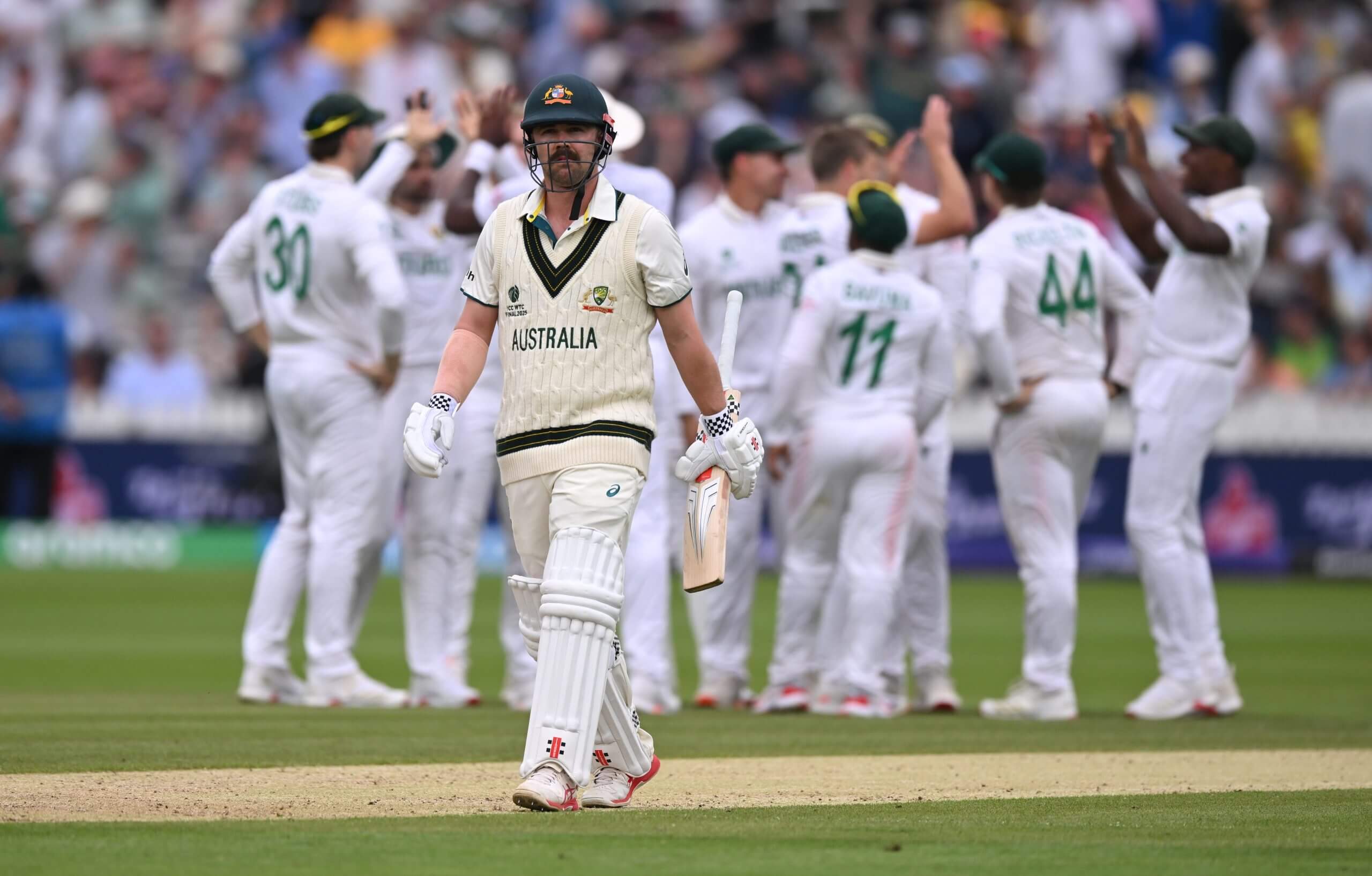
Travis Head is more at home in the middle order (Mike Hewitt/Getty Images)
Cameron Bancroft (Western Australia)
Test career: 10 matches, 446 runs @ 26.23, 3 x 50, SR: 42.80
Last Test: vs. England, Lord’s, August 2019
2024-25 Sheffield Shield: Seven matches, 344 runs @ 26.46, 1 x 100, 1 x 50, SR: 35.46
Will he ever be able to outrun the past? ‘Sandpapergate’ will forever haunt Bancroft, despite him being very much a junior following instruction in the ball-tampering affair in South Africa back in 2018.
Bancroft has the concentration powers of a chess grandmaster, is physically tough and, while he falls over a tad on his front foot, is considered a better player than his first-class average of 39.02. But having been ignored by the selectors after scoring 945 Shield runs at 59.06 in 2022-23, even three consecutive triple centuries might not see him return.
Was missing a zero in his opening Shield knock — 10s need to be squared for Bancroft to stand a chance.

Jofra Archer appeals against Cameron Bancroft at Lord’s in 2019 (Stu Forster/Getty Images)
Nathan McSweeney (South Australia)
Test career: Three matches, 72 runs @ 14.40, SR: 33.96
Last Test: vs India, Brisbane, December 2024
2024-25 Sheffield Shield: Six matches, 478 runs @ 43.45, 1 x 100, 3 x 50, SR: 39.11
Starting your Test career against an India attack led by a firing Bumrah is a tough enough gig. Doing so just a few weeks after opening the batting for the first time in professional cricket made it a particularly tall order.
McSweeney’s elevation appeared bizarre, but Bailey and his selection team have openly stated their belief that the Test team should contain the best six batters regardless of position.
For South Australia, whom he captained to a One-Day Cup and Sheffield Shield double in 2024-25, McSweeney bats at No 3 but was bumped up a spot for Australia ‘A’ in the weeks before the India series.
McSweeney’s Border-Gavaskar Trophy numbers make ugly reading, but then others struggled in that competition too. Across five Tests, Khawaja passed 50 just once, averaging 20.44.
Many expect McSweeney — who, having also skippered Brisbane Heat to the Big Bash League title, is the only man other than Smith to win all three domestic trophies as captain — to return to Test cricket in the future. Just not quite yet. He started the season for South Australia at three, making nought and six against Victoria.

Jasprit Bumrah celebrates dismissing Nathan McSweeney in Brisbane last December (Bradley Kanaris/Getty Images)
Josh Inglis (Western Australia)
Test career: Three matches, 119 runs @ 29.75, 1 x 100, SR: 82.63
Last Test: vs West Indies, Bridgetown, June 2025
2024-25 Sheffield Shield: Three matches, 363 runs @ 72.60, 2 x 100, SR: 78.06
Inglis’ elevation is the outside, if not impossible, bet.
In his brief Test career, Leeds-born Inglis has batted in the middle-order, making a 94-ball 102 on debut against Sri Lanka in January. That century placed him among those few batters to have reached three figures in all three international formats. But he has opened in a handful of his ODI innings and been in the top three in 19 of his 35 T20 international outings.
However, despite scoring both quickly and heavily during a small handful of Shield games last summer, it feels like a step too far for a cautious set of selectors.

Josh Inglis celebrates scoring a century on debut (Ishara S. Kodikara/ AFP via Getty Images)
The Ashes Test schedule
November 21-25: First Test, Perth (starts 02:30 GMT, 21:30 ET)
December 4-8: Second Test, Brisbane (day/night) (04:30 GMT, 23:30 ET)
December 17-21: Third Test, Adelaide (00:00 GMT, 19:00 ET)
December 26-30: Fourth Test, Melbourne (23:30 GMT, Dec 25-29, 18:30 ET)
January 4-8: Fifth Test, Sydney (23:30 GMT, Jan 3-7, 18:30 ET)
Click here to read more cricket stories on The Athletic, or follow Cricket on The Athletic app via the Discover tab.
(Top photo: Matthew Lewis-ICC/ICC via Getty Images)

